2009 in arthropod paleontology
This list of fossil arthropods described in 2009 is a list of new taxa of trilobites, fossil insects, crustaceans, arachnids and other fossil arthropods that have been described during the year 2009, as well as other significant discoveries and events related to arthropod paleontology that occurred.
| |||
|---|---|---|---|
Anomalocaridids
| Name | Novelty | Status | Authors | Age | Unit | Location | Notes | Images |
|---|---|---|---|---|---|---|---|---|
|
gen et sp nov |
Valid |
Kühl, Briggs, & Rust |
Lower Devonian |
|||||
Arachnids
| Name | Novelty | Status | Authors | Age | Unit | Location | Notes | Images |
|---|---|---|---|---|---|---|---|---|
|
gen et sp nov |
Valid |
Selden & Penney |
Ypresian |
Horsefly Lagerstätte, British Columbia |
||||
Insects
| Name | Novelty | Status | Authors | Age | Unit | Location | Notes | Images |
|---|---|---|---|---|---|---|---|---|
|
sp nov |
Valid |
Stewart Valley Group |
only described Neogene snakefly fossil |
|||||
|
gen et sp nov |
Valid |
Makarkin & Archibald |
Ypresian |
Tom Thumb Tuff member |
| |||
| Apis (Cascapis) nearctica[5] |
sp nov |
Valid |
Engel, Hinojosa-Diaz, & Rasnitsyn |
Middle Miocene |
The first fossil Apis from North America. |
|||
| Aspidopleura[6] |
gen et sp nov |
Valid |
Gibson |
Eocene |
Baltic amber |
An Eupelmid wasp |
| |
|
gen et sp nov |
Valid |
Gibson |
Eocene |
Baltic amber |
An Eupelmid wasp |
| ||
|
sp nov |
Valid |
Archibald |
Ypresian |
Tom Thumb Tuff member |
A Cimbrophlebiid scorpionfly |
|||
|
sp nov |
Valid |
Archibald |
Ypresian |
|||||
|
sp nov |
Valid |
Archibald |
Ypresian |
|||||
|
sp nov |
Valid |
Archibald |
Ypresian |
Tom Thumb Tuff member |
||||
|
Ctenobethylus oblongiceps[8] |
comb nov |
Jr synonym |
Fossil Dolichoderine ant. |
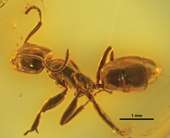 Eldermyrmex oblongiceps | ||||
|
gen et sp nov |
valid |
Chaboo & Engel |
Parachute Member, |
One of the oldest tortoise beetles |
||||
|
gen et sp nov |
valid |
Chaboo & Engel |
Parachute Member, |
One of the oldest tortoise beetles |
||||
|
sp nov |
Valid |
Dlussky, Wappler, & Wedmann |
Eckfeld Maar |
A Formicinae ant |
| |||
|
sp nov |
Valid |
Dlussky, Wappler, & Wedmann |
Messel Formation |
A Formicinae ant |
| |||
|
sp nov |
Valid |
Burdigalian |
Dominican amber |
A Pteromalid wasp |
| |||
|
sp nov |
Valid |
Gibson |
Eocene |
Baltic amber |
An Eupelmid wasp |
| ||
|
gen et sp nov |
Valid |
Gibson |
Eocene |
Baltic amber |
An Eupelmid wasp |
| ||
|
gen et sp nov |
Valid |
Burdigalian |
Dominican amber |
A Halictid bee |
| |||
|
sp nov |
Valid |
Archibald, Makarkin, & Ansorge |
Ypresian |
Tom Thumb Tuff member |
A Nymphid neuropteran |
| ||
|
sp nov |
Valid |
Burdigalian |
Dominican amber |
A Halictid bee |
| |||
|
Paleohabropoda[14] |
Gen et sp nov |
valid |
Michez & Ramont |
An anthophorine bee |
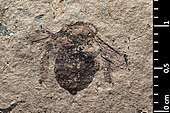 Paleohabropoda oudardi | |||
|
Comb nov |
Jr synonym |
(Mayr) |
Middle Eocene |
European amber |
A formicine ant, new combination for |
| ||
|
sp nov |
valid |
Jepson, Makarkin, & Jarzembowski |
An Ithonidae lacewing, |
|||||
|
Sp nov |
Valid |
Dlussky |
Late Eocene |
Baltic amber |
A ponerine ant |
| ||
|
Sp nov |
Valid |
Archibald, Makarkin, Ansorge |
Priabonian |
Baltic amber |
A Nymphid neuropteran |
|||
|
Protomyrmica[18] |
Gen et sp nov |
valid |
Dlussky & Radchenko |
Priabonian |
A myrmicine ant |
 Protomyrmica atavia | ||
|
sp nov |
Valid |
Burdigalian |
Dominican amber |
A termite bug |
| |||
|
Tetraponera groehni[17] |
sp nov |
Valid |
Dlussky |
Pribonian |
A Pseudomyrmecin ant |
 Tetraponera groehni | ||
Trilobites
| Name | Novelty | Status | Authors | Age | Unit | Location | Notes | Images |
|---|---|---|---|---|---|---|---|---|
|
Alperillaenus[20] |
Gen. et sp. nov |
Valid |
Pour, Popov & Vinogradova |
A member of the family Illaenidae. Genus includes new species A. intermedius. |
||||
|
Ammagnostus antarcticus[21] |
Sp. nov |
Valid |
Bentley, Jago & Cooper |
Goyder Formation[22] |
||||
|
Asaphellus stubbsi[23] |
Sp. nov |
Valid |
Fortey |
|||||
|
Bhargavia[24] |
Gen. et sp. et comb. nov |
Valid |
Peng et al. |
Parahio Formation |
A member of the family Ellipsocephalidae. The type species is B. prakritika; genus also includes "Syspacephalus" obscurus Palmer and Halley (1979). |
|||
|
Bienvillia chaya[25] |
Sp. nov |
Valid |
Waisfeld & Vaccari |
Suri Formation |
||||
|
Catillicephalina[21] |
Gen. et comb. nov |
Valid |
Bentley, Jago & Cooper |
Spurs Formation |
A new genus for "Catillicephala" glasgowensis Jago & Cooper (2005). |
|||
|
Damiraspis[20] |
Gen. et sp. nov |
Valid |
Pour, Popov & Vinogradova |
An asaphid trilobite. Genus includes new species D. margiana. |
||||
|
Degamella lingulata[26] |
Sp. nov |
Valid |
Zhou & Zhou |
Pagoda Formation |
A member of the family Cyclopygidae. |
|||
|
Dividuagnostus tortelloi[25] |
Sp. nov |
Valid |
Waisfeld & Vaccari |
Suri Formation |
||||
|
Doremataspis contracta[21] |
Sp. nov |
Valid |
Bentley, Jago & Cooper |
Spurs Formation |
||||
|
Farasaphus[20] |
Gen. et sp. nov |
Valid |
Pour, Popov & Vinogradova |
An asaphid trilobite. Genus includes new species F. singularis. |
||||
|
Gunnia smithi[24] |
Sp. nov |
Valid |
Peng et al. |
Parahio Formation |
A member of the family Ptychopariidae. |
|||
|
Haydenaspis[24] |
Gen. et sp. nov |
Valid |
Peng et al. |
Parahio Formation |
A member of the family Dinesidae. The type species is H. parvatya. |
|||
|
Himalisania[24] |
Gen. et comb. nov |
Valid |
Peng et al. |
Karsha Formation |
A member of the family Lisaniidae. The type species is "Eoshengia" sudani Jell & Hughes (1997). |
|||
|
Hypermecaspis edselbrussai[25] |
Sp. nov |
Valid |
Waisfeld & Vaccari |
Suri Formation |
||||
|
Jamrogia[21] |
Gen. et sp. nov |
Valid |
Bentley, Jago & Cooper |
Spurs Formation |
A member of the new family Jamrogiidae. Genus includes new species J. jamrogensis. |
|||
|
Kaotaia prachina[24] |
Sp. nov |
Valid |
Peng et al. |
Parahio Formation |
A member of the family Ptychopariidae. |
|||
|
Koldinia odelli[24] |
Sp. nov |
Valid |
Peng et al. |
Karsha Formation |
Possibly a member of the family Anomocaridae. |
|||
|
Litzicurus[27] |
Gen. et sp. et comb. nov |
Valid |
Adrain, McAdams & Westrop |
Early Ordovician |
Possibly a member of Hystricuridae. Genus includes new species L. shawi, as well as "Pseudohystricurus" orbus Ross (1953). |
|||
|
Microparia (Quadratapyge) obsoleta[26] |
Sp. nov |
Valid |
Zhou & Zhou |
Pagoda Formation |
A member of the family Cyclopygidae. |
|||
|
Monanocephalus liquani[24] |
Sp. nov |
Valid |
Peng et al. |
Hsuchuang Formation |
A member of the family Ptychopariidae. |
|||
|
Nileus jafari[28] |
Sp. nov |
Valid |
Pour & Turvey |
Ordovician (Dapingian to early Darriwilian) |
Shirgesht Formation |
A member of the family Nileidae. |
||
|
Proasaphiscus simoni[24] |
Sp. nov |
Valid |
Peng et al. |
Parahio Formation |
A member of the family Proasaphiscidae. |
|||
|
Probowmania bhatti[24] |
Sp. nov |
Valid |
Peng et al. |
Parahio Formation |
A member of the family Ptychopariidae. |
|||
|
Prozacanthoides lahiri[24] |
Sp. nov |
Valid |
Peng et al. |
Parahio Formation |
A member of the family Zacanthoididae. |
|||
|
Psalikilus hestoni[27] |
Sp. nov |
Valid |
Adrain, McAdams & Westrop |
Early Ordovician |
||||
|
Sudanomocarina sinindica[24] |
Sp. nov |
Valid |
Peng et al. |
Parahio Formation |
A member of the family Proasaphiscidae. |
|||
|
Sp. nov |
Valid |
Peng et al. |
Karsha Formation |
A member of the family Alsataspididae. |
||||
|
Warburtonella[29] |
Gen. et sp. nov |
Valid |
Sun & Jago |
Warburton Basin |
A polymerid trilobite. Genus includes new species W. coongiensis. |
|||
|
Xingrenaspis parthiva[24] |
Sp. nov |
Valid |
Peng et al. |
Parahio Formation |
A member of the family Ptychopariidae. |
|||
|
Xingrenaspis shyamalae[24] |
Sp. nov |
Valid |
Peng et al. |
Parahio Formation |
A member of the family Ptychopariidae. |
|||
References
- Kühl, G; Briggs, DE; Rust, J (February 2009). "A Great-Appendage Arthropod with a Radial Mouth from the Lower Devonian Hunsrück Slate, Germany". Science. 323 (5915): 771–3. Bibcode:2009Sci...323..771K. doi:10.1126/science.1166586. ISSN 0036-8075. PMID 19197061.
- Selden, P.A.; Penney, D. (2009). "A fossil spider (Araneae: Pisauridae) of Eocene age from Horsefly, British Columbia, Canada". Contributions to Natural History. 12: 1269–1282.
- Engel, M. S. (2009). "A Miocene snakefly from Stewart Valley, Nevada (Raphidioptera: Raphidiidae)". Transactions of the Kansas Academy of Science. 112 (4): 211–214. doi:10.1660/062.112.0409.
- Makarkin, V.N.; Archibald, S.B. (2009). "A new genus and first Cenozoic fossil record of moth lacewings (Neuroptera: Ithonidae) from the Early Eocene of North America" (PDF). Zootaxa. 2063: 55–63. doi:10.11646/zootaxa.2063.1.3. Retrieved 24 March 2010.
- Michael S. Engel, I. A. Hinojosa-Diaz & A. P. Rasnitsyn (2009). "A honey bee from the Miocene of Nevada and the biogeography of Apis (Hymenoptera: Apidae: Apini)" (PDF). Proceedings of the California Academy of Sciences. 60 (3): 23–38. Retrieved 4 September 2010.
- Gibson, G.A.P. (2009). "Description of three new genera and four new species of Neanastatinae (Hymenoptera, Eupelmidae) from Baltic amber, with discussion of their relationships to extant taxa". ZooKeys (20): 175–214. doi:10.3897/zookeys.20.161. Archived from the original on 22 September 2010. Retrieved 24 March 2010.
- Archibald, S.B. (2009). "New Cimbrophlebiidae (Insecta: Mecoptera) from the Early Eocene at McAbee, British Columbia, Canada and Republic, Washington, USA" (PDF). Zootaxa. 2249: 51–62. doi:10.11646/zootaxa.2249.1.5. Retrieved 24 March 2010.
- Heterick, B. E.; Shattuck, S. (2011). "Revision of the ant genus Iridomyrmex (Hymenoptera: Formicidae)". Zootaxa. 2845: 1–174.
- Chaboo, C. S.; Engel, M. S. (2009). "Eocene tortoise beetles from the Green River Formation in Colorado, U.S.A. (Coleoptera: Chrysomelidae: Cassidinae)". Systematic Entomology. 34 (2): 202–209. doi:10.1111/j.1365-3113.2008.00456.x.
- Dlussky, GM; Wappler, T; Wedmann, S (2009). "Fossil ants of the genus Gesomyrmex Mayr (Hymenoptera, Formicidae) from the Eocene of Europe and remarks on the evolution of arboreal ant communities". Zootaxa. 2031: 1–20. doi:10.11646/zootaxa.2031.1.1. S2CID 56253714.
- Engel, M.S. (2005). "The first fossil leptofoenine wasp (Hymenoptera, Pteromalidae): A new species of Leptofoenusin Miocene amber from the Dominican Republic". ZooKeys (13): 57–66. doi:10.3897/zookeys.13.159.
- Engel, M.S. (2009). "Two new halictine bees in Miocene Amber from the Dominican Republic (Hymenoptera, Halictidae)". ZooKeys (29): 1–12. doi:10.3897/zookeys.29.257.
- Archibald, S.B.; Makarkin,V.N.; Ansorge, J. (2009). "New fossil species of Nymphidae (Neuroptera) from the Eocene of North America and Europe" (PDF). Zootaxa. 2157: 59–68. doi:10.11646/zootaxa.2157.1.4.
- Michez, D.; Ramont, P. (2009). "Taxonomy; New fossil evidence of the early diversification of bees: Paleohabropoda oudardi from the French Paleocene (Hymenoptera, Apidae, Anthophorini)". Zoologica Scripta. 38 (2): 171–181. doi:10.1111/j.1463-6409.2008.00362.x.
- LaPolla, J.S.; Dlussky, G.M. (2010). "Review of fossil Prenolepis genus-group species (Hymenoptera: Formicidae)". Proceedings of the Entomological Society of Washington. 112 (2): 258–273. doi:10.4289/0013-8797-112.2.258.
- Jepson, JE; Makarkin, VN; Jarzembowski, E (2009). "New lacewings (Insecta: Neuroptera) from the Lower Cretaceous Wealden supergroup of Southern England". Cretaceous Research. 30 (5): 1325–1338. doi:10.1016/j.cretres.2009.07.012.
- Dlussky, G. M. (2009). "The ant subfamilies Ponerinae, Cerapachyinae, and Pseudomyrmecinae (Hymenoptera, Formicidae) in the Late Eocene Ambers of Europe". Paleontological Journal. 43 (9): 1043–1086. doi:10.1134/S0031030109090068.
- Dlussky, G. M.; Radchenko, A. G. (2009). "Two new primitive ant genera from the late Eocene European ambers". Acta Palaeontologica Polonica. 54 (3): 435–441. doi:10.4202/app.2008.0092.
- Engel, M.S. (2009). "A new termite bug in Miocene amber from the Dominican Republic (Hemiptera, Termitaphididae)". ZooKeys (25): 61–68. doi:10.3897/zookeys.25.267.
- Mansoureh Ghobadi Pour; Leonid E. Popov; Elena V. Vinogradova (2009). "Middle Ordovician (late Darriwilian) trilobites from the northern Betpak-Dala Desert, central Kazakhstan". Memoirs of the Association of Australasian Palaeontologists. 37: 327–349. ISSN 0810-8889.
- Christopher J. Bentley; James B. Jago; Roger A. Cooper (2009). "An Acmarhachis typicalis zone trilobite fauna from the Cambrian of northern Victoria Land, Antarctica". Memoirs of the Association of Australasian Palaeontologists. 37: 165–197. ISSN 0810-8889.
- Patrick M. Smith; John R. Paterson; Glenn A. Brock (2018). "Trilobites and agnostids from the Goyder Formation (Cambrian Series 3, Guzhangian; Mindyallan), Amadeus Basin, central Australia". Zootaxa. 4396 (1): 1–67. doi:10.11646/zootaxa.4396.1.1. PMID 29690342.
- Richard A. Fortey (2009). "A new giant asaphid trilobite from the Lower Ordovician of Morocco". Memoirs of the Association of Australasian Palaeontologists. 37: 9–16. ISSN 0810-8889.
- Shanchi Peng; Nigel C. Hughes; Noel A. Heim; Bryan K. Sell; Xuejian Zhu; Paul M. Myrow; Suraj K. Parcha (2009). "Cambrian trilobites from the Parahio and Zanskar Valleys, Indian Himalaya". Journal of Paleontology. 71: 1–95. doi:10.1666/08-129.1.
- Beatriz G. Waisfeld; N. Emilio Vaccari (2009). "Trilobites from the Suri Formation (Lower Ordovician; Floian), Famatina Belt, Argentina". Memoirs of the Association of Australasian Palaeontologists. 37: 407–426. ISSN 0810-8889.
- Zhiyi Zhou; Zhiqiang Zhou (2009). "Ordovician cyclopygid trilobites from the Pagoda Formation of southwestern Shaanxi, China". Memoirs of the Association of Australasian Palaeontologists. 37: 87–101. ISSN 0810-8889.
- Jonathan M. Adrain; Neo E.B. McAdams; Stephen R. Westrop (2009). "Trilobite biostratigraphy and revised bases of the Tulean and Blackhillsian stages of the Ibexian Series, Lower Ordovician, western United States". Memoirs of the Association of Australasian Palaeontologists. 37: 541–610. ISSN 0810-8889.
- Mansoureh Ghobadi Pour; Samuel T. Turvey (2009). "Revision of some Lower to Middle Ordovician leiostegiid and associated trilobites from Iran and China". Memoirs of the Association of Australasian Palaeontologists. 37: 463–480. ISSN 0810-8889.
- Xiaowen Sun; James B. Jago (2009). "An Iverian (Furongian, Cambrian) trilobite faunule from the subsurface Warburton Basin, South Australia". Memoirs of the Association of Australasian Palaeontologists. 37: 1–8. ISSN 0810-8889.

.jpg)
.jpg)

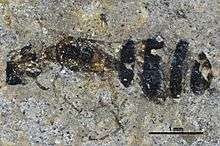
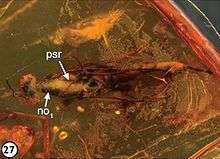
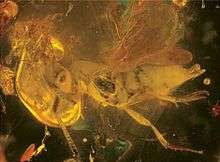
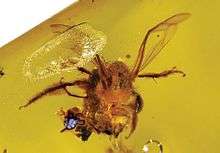
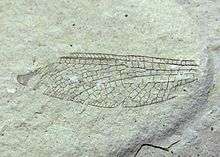

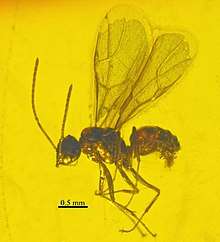
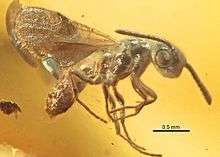
.jpg)